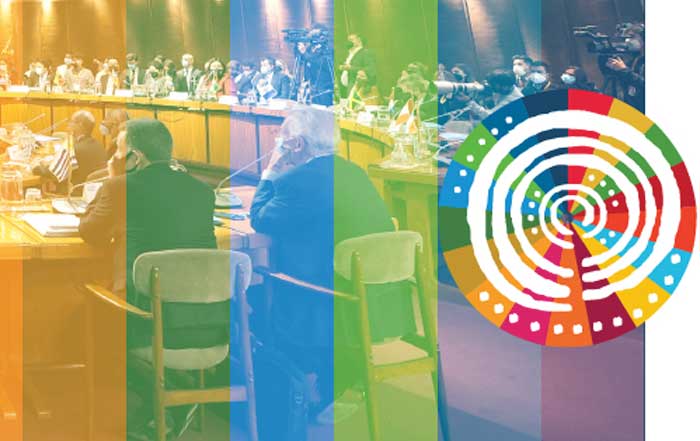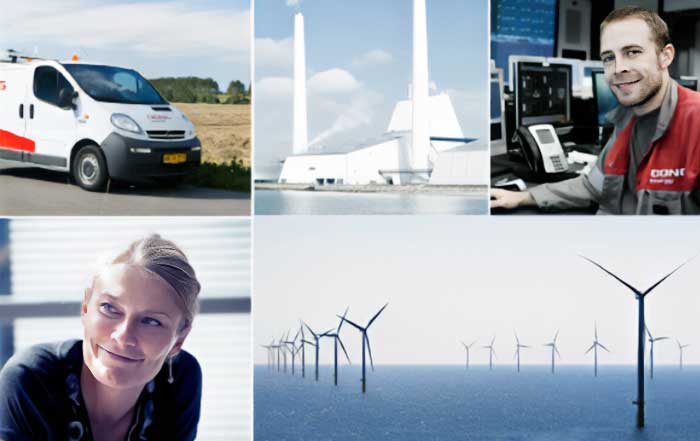As 2025 unfolds, South America stands at a pivotal juncture in its economic trajectory the region has historically been shaped by commodity-driven cycles, political volatility, and uneven development across nations, but it is now transitioning toward a more diversified growth model. Governments, multilateral institutions, and private enterprises are collectively striving to address systemic challenges while capturing opportunities in technology, sustainability, and global trade. For businesses worldwide seeking new markets and for investors analyzing long-term prospects, South America represents both promise and complexity.
This article provides an in-depth assessment of economic growth projections and emerging trends across South America, drawing attention to structural reforms, technological adoption, green transitions, and the interplay between regional and global market dynamics. The analysis highlights key opportunities for businesses and investors while also addressing risks that may shape the trajectory of the region through the remainder of the decade.
South America Economic Dashboard 2025-2030
Explore growth projections and emerging opportunities
Annual Growth Rate
Key Sectors
Emerging Trends 2025-2030
Current Economic Landscape
The macroeconomic environment of South America in 2025 is characterized by resilience in the face of global uncertainties. Following the pandemic recovery phase, the region’s largest economies — Brazil, Argentina, Chile, Colombia, and Peru — have pursued stabilization policies to mitigate inflationary pressures and currency volatility. While inflation remains above the global average in some markets, central banks across the region have moved toward easing monetary policies to stimulate growth.
Commodity exports, particularly soybeans, copper, oil, and lithium, continue to anchor trade balances. However, dependence on primary goods is gradually giving way to diversification strategies aimed at boosting industrialization, expanding digital economies, and strengthening manufacturing capabilities. For businesses assessing global expansion strategies, South America’s evolving market landscape signals both new opportunities and persistent challenges that demand careful navigation. Explore further insights into global business trends.
Growth Projections for 2025–2030
Brazil: The Regional Anchor
Brazil, accounting for nearly half of South America’s GDP, is projected to sustain moderate growth averaging 2.5–3% annually through 2030. Structural reforms in taxation, pension systems, and digital infrastructure are expected to enhance competitiveness. Brazil’s burgeoning technology sector, particularly fintech and agritech, is attracting substantial investment. Moreover, the nation’s role as a leader in biofuels and renewable energy positions it as a global reference point in sustainable development.
Argentina: Balancing Reform and Recovery
Argentina faces a more fragile path. Although its GDP is expected to expand modestly at 1.5–2% annually, the trajectory depends heavily on fiscal discipline and external financing. The country’s lithium reserves, among the largest in the world, have the potential to transform its export profile, but political instability and recurrent debt crises remain risks for global investors. For updates on regional economy, Argentina’s progress in structural reforms will be decisive.
Chile and Peru: The Mining Giants
Chile and Peru are set to remain leaders in copper production, a mineral essential for global electrification and the green transition. Growth projections for both countries hover around 3–3.5% annually, supported by expanding trade partnerships with Asia. The push toward sustainable mining and ESG compliance makes these markets particularly attractive to institutional investors focused on responsible practices. Learn more about sustainable business models.
Colombia: Diversification and Energy Transition
Colombia is transitioning from traditional oil dependency toward diversification into technology services, tourism, and green energy. Growth estimates of 3–3.2% annually reflect this shift, supported by ongoing efforts to improve infrastructure and expand digital connectivity. As businesses look for opportunities in Latin America’s service economies, Colombia stands out as a promising case.
Emerging Economic Trends
Digital Transformation and Technology Adoption
Technology is a central pillar of South America’s emerging growth story. Across the region, governments and private enterprises are investing in digital infrastructure, 5G networks, and e-commerce platforms. Countries like Brazil, Chile, and Colombia are witnessing the rise of homegrown startups in fintech, healthtech, and edtech. Businesses evaluating entry strategies into the region must recognize that consumer behavior is shifting rapidly toward digital-first models. For more perspectives on the role of artificial intelligence in shaping markets, South America is expected to adopt AI-driven solutions in banking, logistics, and agriculture at accelerating rates.
The Green Transition and Resource Potential
South America possesses unparalleled natural resources critical to the global energy transition, including lithium, copper, and rare earths. Governments are increasingly negotiating long-term agreements with global companies to develop value chains domestically rather than exporting raw materials. This shift aims to foster local employment, boost innovation, and strengthen industrial ecosystems. Chile’s National Lithium Strategy and Brazil’s expansion of biofuel production illustrate the region’s strategic positioning in the global decarbonization agenda. Learn more from International Energy Agency reports.
Regional Integration and Trade Agreements
Efforts to deepen regional integration through Mercosur and partnerships with the European Union and Asia-Pacific economies are gaining momentum. The long-delayed EU-Mercosur trade deal may finally advance, opening markets for goods and services while aligning environmental and labor standards. Such agreements would not only increase export competitiveness but also signal greater stability to international investors. Explore insights into evolving banking systems that underpin trade finance in the region.
Global and Geopolitical Dynamics
South America’s economic prospects are deeply intertwined with global geopolitical shifts. The United States, China, and the European Union all view the region as strategically important, whether for securing access to resources, expanding trade ties, or counterbalancing geopolitical rivals. China has deepened its footprint through infrastructure financing and long-term commodity contracts, while the U.S. emphasizes democratic governance and digital economy partnerships. The balancing act between these global powers will shape South America’s trajectory in the years ahead. For further discussion, see international business coverage.
Employment and Labor Market Dynamics
Shifting Workforce Structures
South America’s employment landscape is undergoing a profound shift as economies transition from commodity-heavy industries to service-driven and technology-enabled sectors. The rise of digital platforms and remote work opportunities has expanded job prospects beyond traditional urban centers. This is particularly evident in countries like Brazil and Colombia, where remote service outsourcing in areas such as software development and customer support is integrating local workers into global value chains. For insights into evolving employment trends, the region’s youth-driven workforce represents both a demographic dividend and a policy challenge.
Informality and Policy Responses
One of the region’s persistent obstacles remains high levels of labor informality, with estimates suggesting that more than 50% of the workforce in some countries operates outside formal systems. Informal employment undermines tax revenues, reduces access to social protections, and limits productivity growth. Governments are increasingly leveraging digital ID systems, mobile payments, and AI-based monitoring to formalize employment and expand financial inclusion. These innovations connect to broader technology-driven transformations reshaping the region.
Stock Markets and Capital Flows
Performance and Integration
South American stock markets, while historically volatile, are showing signs of greater integration with global capital flows. Exchanges in São Paulo, Santiago, and Lima are working toward regional consolidation, aiming to improve liquidity and attract foreign investors. Analysts expect moderate but steady growth in market capitalization as corporate governance standards improve and companies diversify into high-growth sectors such as renewable energy and digital services. Learn more about stock market analysis for emerging economies.
Role of Foreign Investment
Foreign direct investment (FDI) remains a cornerstone of growth in South America. Multinational corporations are particularly drawn to infrastructure development, renewable energy projects, and mining ventures. Sovereign wealth funds and institutional investors are showing renewed interest in the region, spurred by global shifts in supply chains and resource dependencies. Yet political risk premiums and regulatory uncertainties continue to temper enthusiasm, underscoring the need for stable policy frameworks.
Innovation Ecosystems and Entrepreneurship
Startups and Founders Driving Change
South America’s innovation landscape is increasingly vibrant, with hubs in São Paulo, Buenos Aires, Bogotá, and Santiago fostering startups that attract global attention. The success of unicorns such as Nubank in fintech and Rappi in delivery services exemplifies how founders are disrupting traditional industries and positioning South America on the global entrepreneurial map. Explore more about founders and their impact driving business reinvention.
Institutional Support and Venture Capital
Governments and regional development banks are actively promoting innovation ecosystems by creating venture funds, offering tax incentives, and building technology parks. International venture capital is increasingly flowing into South America, drawn by the potential for scalable solutions in financial inclusion, healthcare, logistics, and education. These developments signal an ecosystem that is maturing, with an emphasis on research, patents, and the commercialization of technology.
Sustainable Finance and Green Investment
ESG Integration
As global investors emphasize Environmental, Social, and Governance (ESG) principles, South American economies are adapting rapidly. Countries like Chile and Brazil are leading in issuing green bonds to finance renewable energy projects, reforestation programs, and sustainable agriculture initiatives. Businesses aligning with ESG standards not only gain access to capital but also enhance their reputations in global markets. See more about sustainable finance initiatives influencing corporate strategies.
Renewable Energy Leadership
South America is emerging as a renewable energy powerhouse. Brazil dominates in biofuels and hydropower, while Chile is a global leader in solar and wind capacity. Uruguay, though smaller, has successfully transitioned to generating over 90% of its electricity from renewables. These achievements position the region as a model for the world, demonstrating how investment in clean energy can generate employment, attract FDI, and reduce reliance on fossil fuels. More insights can be found in global energy transitions.
Risks and Challenges
Political Instability
Despite the promise of growth, political volatility remains a critical concern. Frequent shifts in economic policy, social unrest, and populist rhetoric can undermine investor confidence. For example, debates over resource nationalism in Chile and Argentina create uncertainty for mining investments. Businesses must carefully monitor political risk and diversify strategies to mitigate exposure. A broader perspective on global political-economic relations underscores the interconnected nature of these challenges.
Climate Vulnerability
South America is highly vulnerable to climate change, with risks ranging from deforestation in the Amazon to extreme weather events impacting agriculture. These challenges could undermine food security and disrupt key export sectors. Businesses and governments alike must prioritize resilience strategies, including sustainable land use and investment in climate-resilient infrastructure. Learn more about sustainability practices essential to long-term growth.
Inequality and Social Tensions
Deep inequality continues to shape South American societies, fueling discontent and constraining inclusive growth. Bridging these divides requires not only economic expansion but also investments in healthcare, education, and social safety nets. The political will to implement long-term reforms will be a decisive factor in the region’s stability and attractiveness to global investors.
Global Business and Strategic Opportunities
South America’s trajectory between now and 2030 presents strategic opportunities for multinational corporations, investors, and entrepreneurs. From accessing critical minerals essential to the global energy transition, to participating in rapidly expanding digital markets, the region’s potential is substantial. However, businesses must approach these opportunities with a comprehensive understanding of local conditions, regulatory landscapes, and socio-political dynamics. To explore further perspectives on business strategies and global integration, South America remains a region that demands nuanced and informed engagement.
Conclusion
South America in 2025 is a region in transformation. While structural challenges such as political volatility, inequality, and climate risks remain, the drivers of future growth — digital innovation, renewable energy, sustainable finance, and regional integration — are firmly in motion. For businesses and investors worldwide, the continent represents not only a frontier of opportunity but also a testing ground for resilience and adaptability.
By balancing risk with innovation and aligning strategies with the region’s long-term priorities, stakeholders can play a pivotal role in shaping South America’s economic future. The continent’s trajectory will influence global supply chains, investment flows, and sustainability benchmarks, making it an essential region for business leaders to watch closely.








